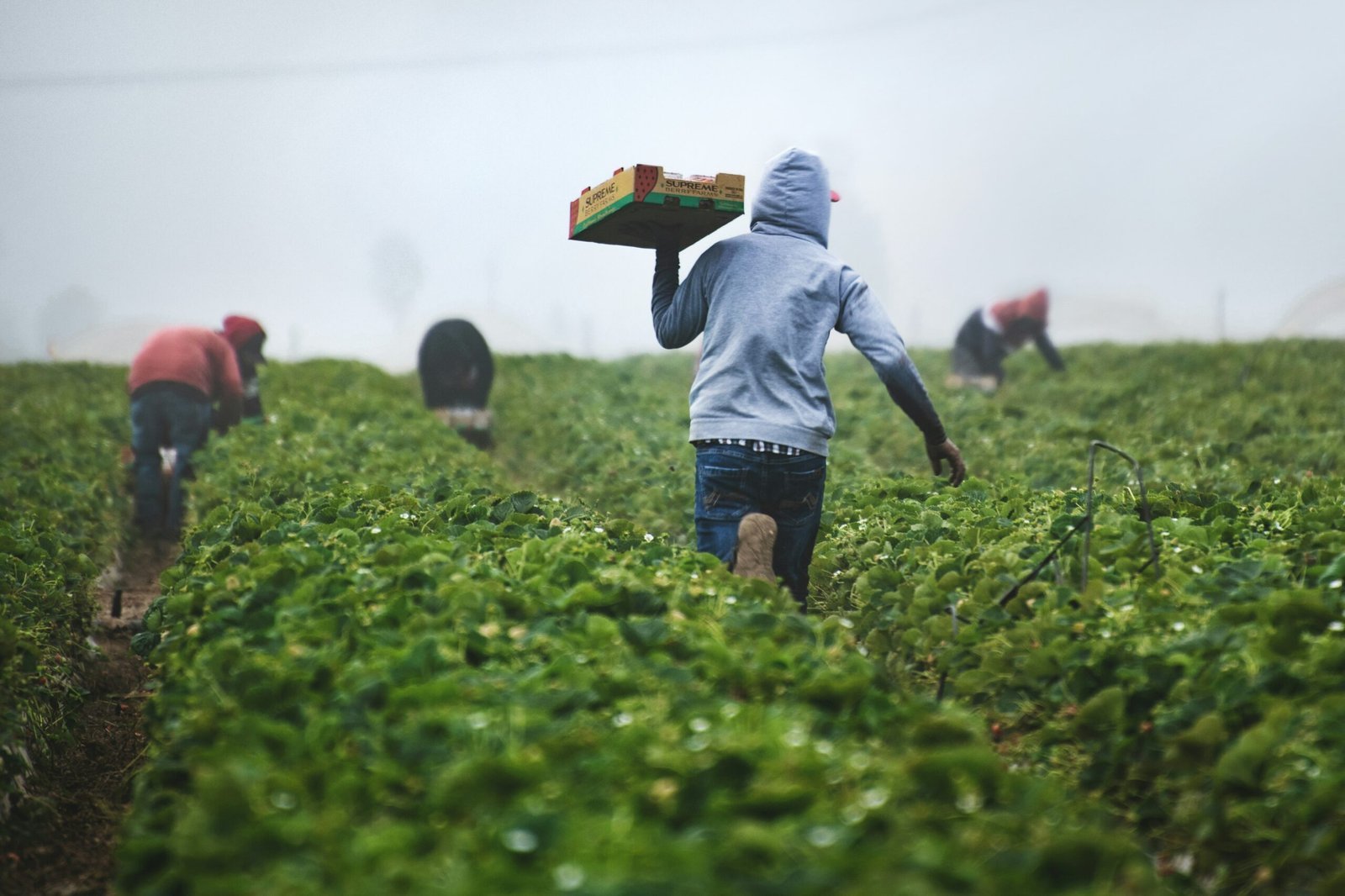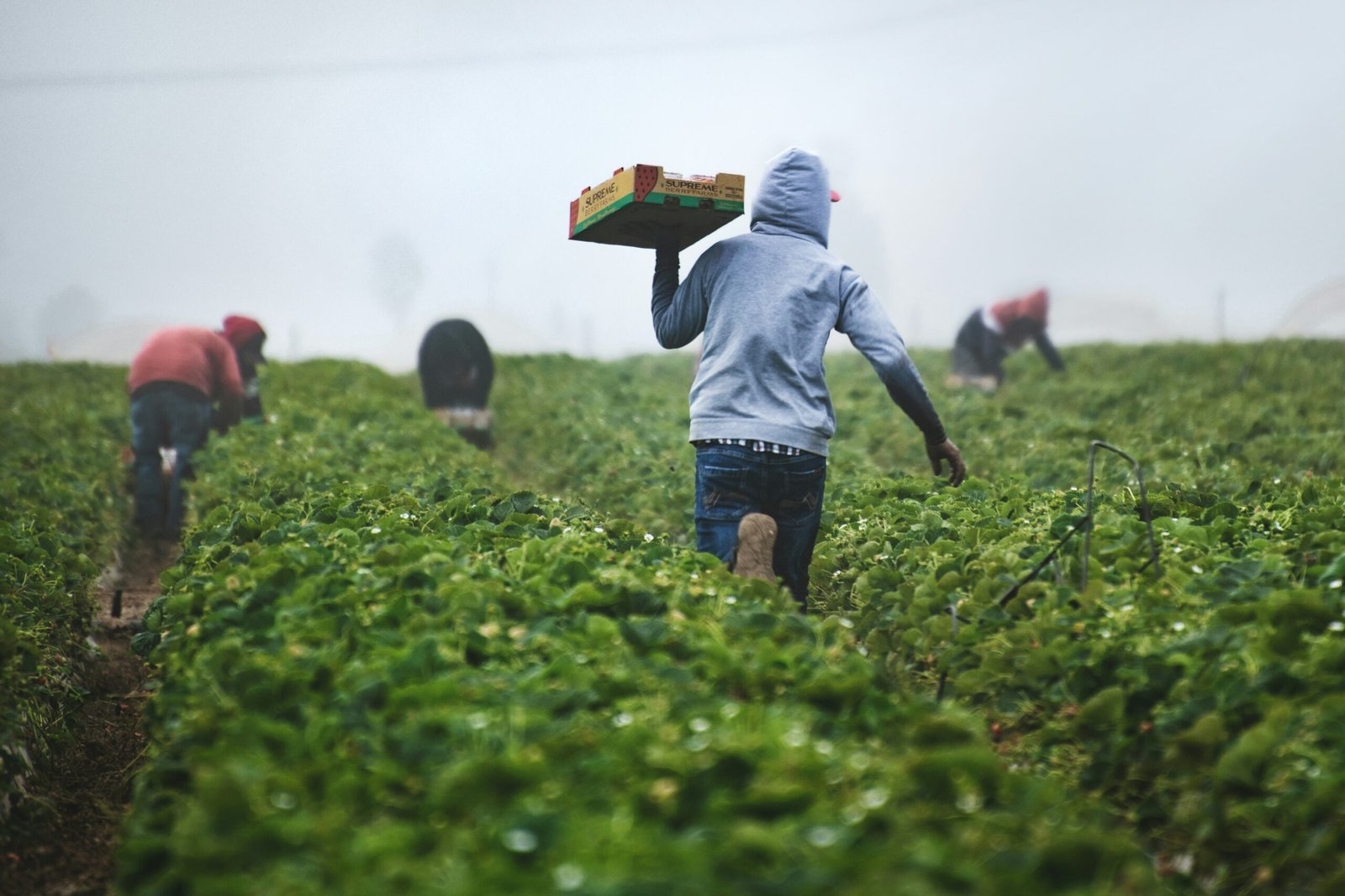
Introduction
The viral video featuring white farmers discussing their expectations regarding black workers stepping in to fill the labor gaps left by immigrant workers has ignited a significant wave of discussions across social media platforms. This video serves as a poignant reflection of the complex dynamics surrounding labor shortages, race relations, and immigration policies in the agricultural sector. The candid conversations captured in the footage reveal not only the farmers’ perspectives but also shed light on broader societal issues that resonate widely with audiences.
Upon its release, the video quickly gained traction and became a focal point for various discussions online. The farmers articulated their views on how changing immigration laws have impacted their ability to source labor, emphasizing a perceived need for local black workers to step in where immigrant labor has waned. Such statements elicited diverse reactions, ranging from support and understanding to criticism and discomfort, reflecting the multifaceted nature of these conversations in contemporary society. The immediacy with which the video went viral underscores the powerful role digital media plays in shaping public discourse around sensitive topics.
The varied responses to the video also highlight the importance of context in understanding the implications of these farmers’ comments. While some argue that the call for black labor is a practical response to economic conditions, others contend that it overlooks historical injustices and ongoing racial inequalities in labor markets. This video has opened a much-needed dialogue about the intersectionality of race, economics, and immigration policy, prompting viewers to reflect deeply on their own perspectives. Through this introduction, the stage is set for examining the reactions and implications of such discussions within the broader societal framework.
Understanding the Context: Labor Dynamics in Agriculture
The agricultural sector in the United States has long relied on a diverse workforce, with immigrant labor playing a crucial role, particularly in regions like Nebraska. Historically, agriculture has required a considerable amount of manual labor, leading to a dependency on migrant workers. This has been especially pronounced in crop production, where labor-intensive activities such as planting, harvesting, and processing are commonplace. The rise in agricultural production and subsequent demand for labor can often be traced back to immigration patterns that provide a robust and flexible workforce.
In recent decades, changes in immigration policy have significantly impacted the availability of labor in the agricultural industry. Legislative shifts aimed at tightening border control and regulating the undocumented workforce have led to challenges for farm operators who have traditionally depended on these workers. This has spurred a complex dynamic within the labor market, as farmers face increased difficulties in recruiting suitable workers. The labor shortages that have emerged as a byproduct of these policy changes have forced many farmers to reconsider their workforce strategies, seeking ways to sustain productivity while navigating stricter immigration regulations.
Moreover, the evolving labor market has introduced additional intricacies into the agricultural context. With rising wages and improved working conditions becoming more prevalent, many employers are reevaluating what labor sources they draw upon. These changes not only affect the economic viability of farming operations but also altering the demographics of labor forces. Concurrently, there has been a growing conversation around the need for a balanced workforce that reflects the local population’s composition. As a result, understanding the intertwined relationship between immigration policies, labor dynamics, and agricultural production is essential when addressing contemporary issues surrounding workforce sustainability in this sector.
The Misconception of ‘Available’ Labor
The notion that black individuals are ‘available and willing’ to fill the labor shortages faced by white farmers is rooted in several misconceptions that overlook the complexities of the labor market and its historical context. While it may appear that there is an ongoing pool of labor ready to engage in agricultural work, this oversimplification fails to acknowledge the multiple factors influencing labor dynamics. The history of agricultural labor in the United States has been shaped significantly by systemic inequalities and socio-economic barriers that disproportionately affect black communities.
Historically, the labor force in agriculture has been heavily reliant on marginalized groups, particularly during and after the era of slavery, where black individuals were forcibly integrated into a labor system that stripped them of agency and recognition. This historical backdrop has led to the mistaken belief that labor shortages can easily be addressed by simply utilizing the existing black population. However, this overlooks the complexities that have emerged as a result of decades of exploitation and economic disenfranchisement, which now affect job availability and choices within these communities.
Furthermore, the perception of availability often disregards the aspirations and educational advancements that many black individuals are pursuing. In recent decades, there has been a significant movement towards higher education and professional careers among black populations, which diverges from traditional roles in agriculture. By assuming that all black individuals are willing to work in manual labor, white farmers perpetuate a reductive stereotype that fails to recognize the diverse ambitions of these individuals. Ultimately, a deeper understanding of labor market needs and the impact of historical injustices is crucial to addressing the realities behind labor shortages in the agricultural sector.
The Reaction of Nebraska Farmers
The viral video depicting a controversial conversation surrounding labor in Nebraska has elicited a variety of reactions from local farmers. Primarily, these Nebraska farmers have voiced their frustrations regarding the apparent reluctance of black individuals to participate in farm work, which they view as a critical component of maintaining their agricultural operations. These sentiments are not merely incidental; they represent a broader dialogue about race, labor, and immigration within the agricultural industry.
The language used by some farmers in the video has been particularly noteworthy. While some expressed irritation and confusion over the perceived hesitance of black laborers to engage in farming, others have adopted a more conciliatory tone, attempting to understand the barriers that may exist. However, the prevailing sentiment among many has been one of disappointment. Farmers feel that their expectations of readily available labor are not being met, thus complicating their efforts to run profitable businesses. This mismatch between the farmers’ perceptions and the realities of labor availability raises important questions about systemic issues that may contribute to these dynamics.
In conclusion, the reactions of Nebraska farmers reveal both frustration and an invitation for dialogue. Addressing these sentiments is essential for fostering a collaborative environment that engages all potential laborers, ensuring a vibrant and sustainable agricultural sector.
Historical Perspectives on Black Labor in Agriculture
The historical contributions of black labor in agriculture are pivotal to understanding the evolving socio-economic landscape of the United States, particularly in the Midwest. From the era of slavery to the present day, the role of black laborers has been significant, often serving as the backbone of agricultural production. Initially, the labor of enslaved individuals was essential in shaping America’s agrarian economy, especially in southern states where cotton, tobacco, and sugar cane dominated the landscape. This labor not only fueled the economy but was also foundational in the establishment of various agricultural practices that prevail today.
As the nation moved towards emancipation, black labor transitioned significantly. After the Civil War, sharecropping emerged as a predominant system, where former slaves and their descendants worked land owned by white landowners. This arrangement often perpetuated cycles of poverty and debt while simultaneously allowing black workers to cultivate their own plots. In the early 20th century, the Great Migration saw a substantial movement of African Americans from rural South to urban North, including the Midwest, seeking better economic opportunities. This migration changed the dynamics of agricultural labor, as black workforces increasingly took on roles in Midwest farms, contributing to the region’s agricultural output.
Over the decades, socio-economic shifts have influenced labor patterns significantly. The mechanization of farms in the mid-20th century led to decreased demand for manual labor, impacting black laborers disproportionately, who had previously relied on agricultural jobs for economic stability. Today, there is a growing recognition of the contributions of black farmers, yet systemic barriers remain. Understanding these historical contexts is crucial in addressing contemporary issues surrounding labor in agriculture, including equity, inclusion, and the ongoing conversations around immigration in the farming sector. The legacy of black labor in agriculture continues to inform present debates about labor rights and the future of farming in America.
Racial Stereotypes and Economic Assumptions
The recent viral video featuring white farmers discussing labor shortages and their reliance on immigrant labor has reignited a complex conversation on racial stereotypes and economic assumptions. At the core of this discussion lies the perception that certain racial or ethnic groups are more suited for specific types of work. This stereotype can lead to problematic assumptions about capabilities, work ethic, and social roles, particularly surrounding the dynamics of race in agricultural labor.
In this scenario, the farmers in the video seemingly adopt the mindset that Black individuals are less likely to contribute positively to agricultural settings, while simultaneously elevating immigrant labor as the preferable choice. This assumption does not only disregard the skills and contributions of local Black workers but also perpetuates a historical narrative rooted in racial prejudice. The farmers’ preferences reflect deeper societal biases that can hinder effective workforce integration and community cohesion.
The dangers of such assumptions extend beyond individual interactions. When farmers dismiss the potential of Black labor or choose to employ immigrants based solely on prevalent stereotypes, they inadvertently contribute to a polarized work environment. This can lead to tensions within the community, leading to divisions that hinder collaboration among local workers of various backgrounds. Furthermore, these stereotypes reinforce a negative feedback loop that can deter potential workers from engaging with local agricultural businesses, ultimately compromising the industry’s sustainability and growth.
It is essential for communities to challenge these stereotypes actively and seek an inclusive approach that recognizes the contributions of all individuals, regardless of race. By dismantling oversimplified views and embracing diversity within the labor force, agricultural sectors can foster enriched work environments that benefit both productivity and community relations.
Social Media Response and Wider Implications
The viral video featuring the interactions between white farmers and black laborers has sparked a significant response across various social media platforms. Reactions have varied widely, illuminating differing perspectives on race, labor practices, and immigration policies. The immediacy and reach of platforms such as Twitter, Facebook, and Instagram have enabled users from diverse backgrounds to engage with the video and share their interpretations. Consequently, this has led to a multifaceted dialogue that traverses cultural, economic, and social lines.
Many social media users have harnessed the video as a catalyst for broader conversations about historical inequalities and contemporary labor dynamics. The depiction of labor relations within the farming sector has invoked discussions on systemic racism, where individuals express support for movements that champion equity and justice within labor rights. This reaction from audiences highlights how the representation of black labor in agricultural contexts is viewed through a historical lens, prompting users to confront uncomfortable truths about the ongoing legacy of discrimination in the workforce.
Additionally, the video has contributed to discussions surrounding immigration concerns, particularly relating to the role of immigrant labor in agriculture and its portrayal in the media. Some commentators argue that it emphasizes the necessity of recognizing the essential contributions made by immigrant workers, advocating for reform in immigration policies that affect labor dynamics. Through hashtags and coordinated campaigns, users have sought to draw attention to the paradox of dependence on immigrant labor while simultaneously engaging in conversations about restrictive immigration regulations.
As a result, the narrative surrounding the video has evolved, indicating a recognition of the intersections between race, labor, and immigration that remain pertinent in public discourse. The impact of social media in amplifying these discussions cannot be overstated, as it fosters a platform for voices that may have been marginalized, leading to a more inclusive dialogue about these critical societal issues.
The Future of Labor in Agriculture
The landscape of agricultural labor is undergoing significant transformation, influenced by various factors including changing demographics, evolving attitudes towards work, and advances in technology. As populations shift and age, the workforce available for agricultural jobs is likely to experience notable changes. Younger generations may be less inclined to pursue traditional farm work, seeking instead opportunities that align with their values and interests, such as sustainability and ethical labor practices. This shift could result in a reliance on a more diverse labor pool, which may include individuals from various cultural and ethnic backgrounds.
Moreover, attitudes towards labor are also evolving. The COVID-19 pandemic has led to heightened awareness regarding the importance of essential workers, including those in agriculture. As society grapples with labor shortages in various sectors, there may be a growing recognition of the critical contributions made by agricultural workers, prompting discussions around fair wages and improved working conditions. Advocates are increasingly emphasizing the need for dialogue around immigration policies that allow for a more stable workforce while also respecting the rights of workers.
In addition to demographic changes and shifts in work attitudes, technology is poised to play an integral role in the future of agricultural labor. The rise of automation and precision agriculture is transforming how farming is conducted, which may reduce the demand for manual labor. However, this technology could also create new job opportunities that require different skill sets. Farmers may find themselves needing workers who are adept at managing sophisticated machinery, analyzing data from farming software, or implementing environmentally sustainable practices.
Overall, the future of labor in agriculture will be defined by the intersection of these factors—demographics, attitudes, and technology—leading to a workforce that is potentially more diverse and equipped to meet the challenges of modern farming. The successful adaptation to these changes will ultimately shape the agricultural landscape in the years to come.
Conclusion and Call to Action
In recent discussions, the viral video featuring white farmers and black labor has sparked significant conversation around the intertwined issues of race, labor, and immigration. This situation illustrates the complex dynamics at play in the agricultural sector, and serves as a microcosm of broader societal challenges. Throughout our exploration, we have highlighted the experiences of marginalized communities within the agricultural framework, emphasizing the importance of equitable labor practices and inclusive policy discussions. These conversations are vital as they influence the future landscape of farming, and indeed, society as a whole.
It is imperative for individuals and communities to engage thoughtfully with these topics. By examining our own beliefs and biases regarding race and immigration, we can better understand how they shape our perspectives on labor and economic opportunities. White farmers navigating the changing demographics of agricultural work must grapple with their reliance on black labor and immigrant contributions. Simultaneously, discussions around systemic inequities must address the importance of valuing the roles that all laborers play in sustaining food production.
As we reflect on these key takeaways, we encourage readers to take an active role in furthering this dialogue. Consider attending local discussions, advocating for equitable labor practices, or educating others in your community about the complexities surrounding race and labor in agriculture. Every action counts in fostering a more just and inclusive future. Acknowledging our collective responsibility can guide us toward more informed and compassionate approaches to immigration and labor issues in our society.
By continuing to engage in these necessary conversations, we can work toward solutions that uplift the dignity of all individuals involved in agriculture, ultimately leading to a more equitable environment for everyone.


